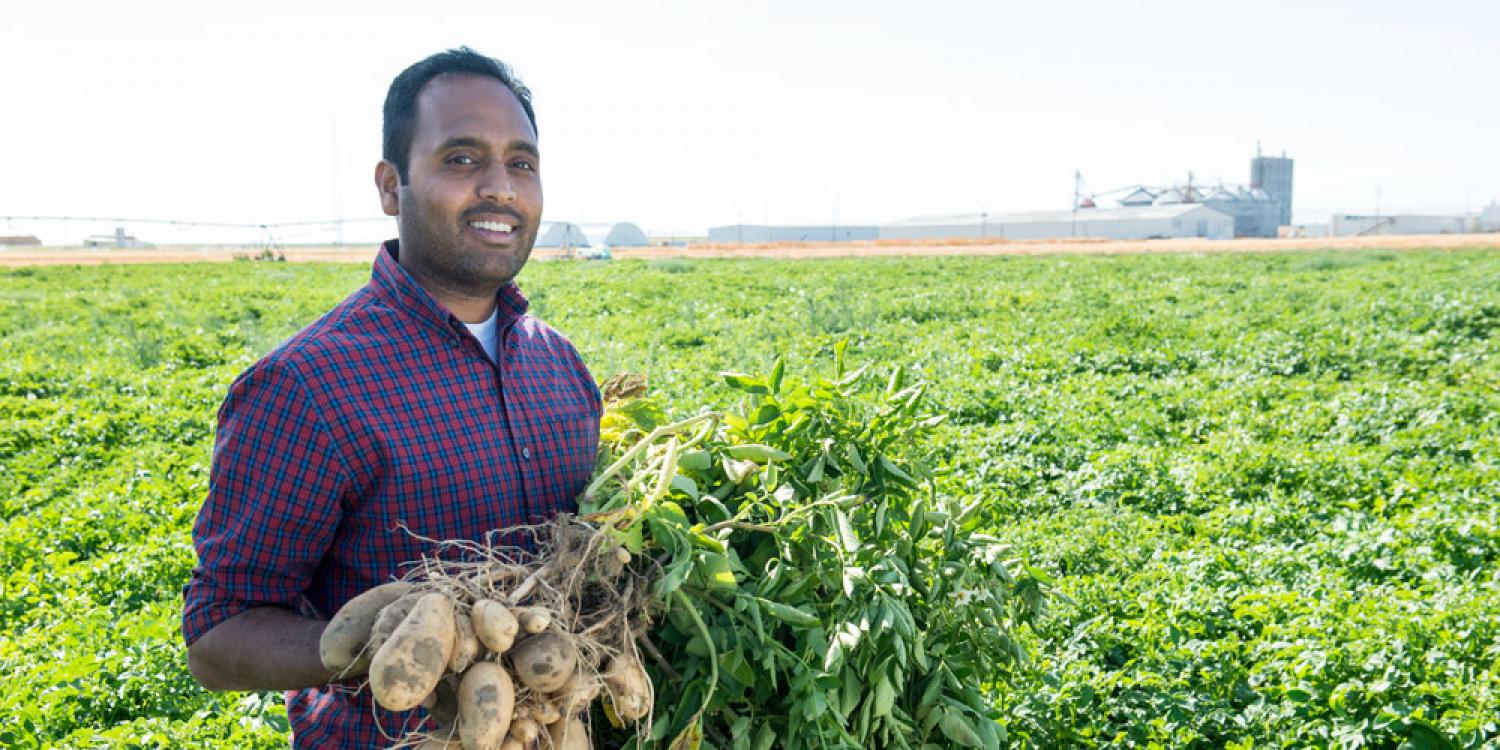
Potatoes are susceptible to a number of pathogens such as potato virus Y, Columbia root knot nematode, and verticillium wilt. Pacific Northwest scientists including Oregon State University's Sagar Sathuvalli are constantly at work to develop disease-resistant varieties faster than the pathogens can mutate.
Sathuvalli, associate professor and Extension potato breeding specialist, conducts research at the Hermiston Agricultural Research and Extension Center. He's part of a team of scientists from OSU, Washington State University, and the University of Idaho that has partnered with the USDA on potato research since the mid-1980s. This tri-state collaboration has produced 40 improved potato varieties, most recently Castle Russet and Echo Russet.
Both Castle Russet and Echo Russet show tolerance to diseases that include potato mop-top virus, which is spread by the problematic powdery scab fungus, according to Sathuvalli. They also are tolerant to soft rot and somewhat to verticillium wilt. The Castle Russet variety is also resistant to all strains of potato virus Y and to corky ring spot, which is caused by tobacco rattle virus and vectored by stubby root nematodes, according to Sathuvalli. Resistance to diseases allows growers to use less fumigant, an important consideration as farmers deal with increasing restrictions.
Oregon’s part of this research focuses on disease and pest resistance, with plantings in four different areas – Hermiston, Corvallis, Klamath Falls, and Malheur County – to create the right variety for the right climate.
While the researchers work to stay ahead of the pathogen curve, they also have to pay attention to how vigorously the potato plants grow, as well as how each variety performs in the kitchen: Is it good for French fries, which must have a great deal of structural integrity? Is it a good “chipper,” which will fry up crisp and light? Is it best sold as a fresh potato, bruise-resistant and maybe with the colored flesh indicative of healthful antioxidants?
“And most importantly,” said Sathuvalli, “does it taste good?”
While this research is not oriented specifically toward organic farming, Sathuvalli says, it is still highly relevant. “Some of the varieties, like Castle Russet, are resistant to potato virus Y, corky ringspot, and other pathogens, and require no major pesticides,” he said. “So they are well suited for organic cultivation.”
Getting to the point of releasing a new potato is a long process, Sathuvalli says. From the time breeding begins to when the potatoes are approved for release, it usually takes 12 to 15 years of exacting field trials.
Potatoes are the third-most consumed food crop in the world. Cultivars developed by the tri-state collaboration ranked as the third, fourth, seventh, ninth, and 10th most widely grown potato varieties in the United States in 2016, accounting for about one-third of the nationwide fall crop. In the past 10 years, the U.S. farmgate value of tri-state varieties has increased by approximately $190 million. These varieties are now grown on more than 143,000 acres in the Pacific Northwest, with value to growers estimated at $600 million.